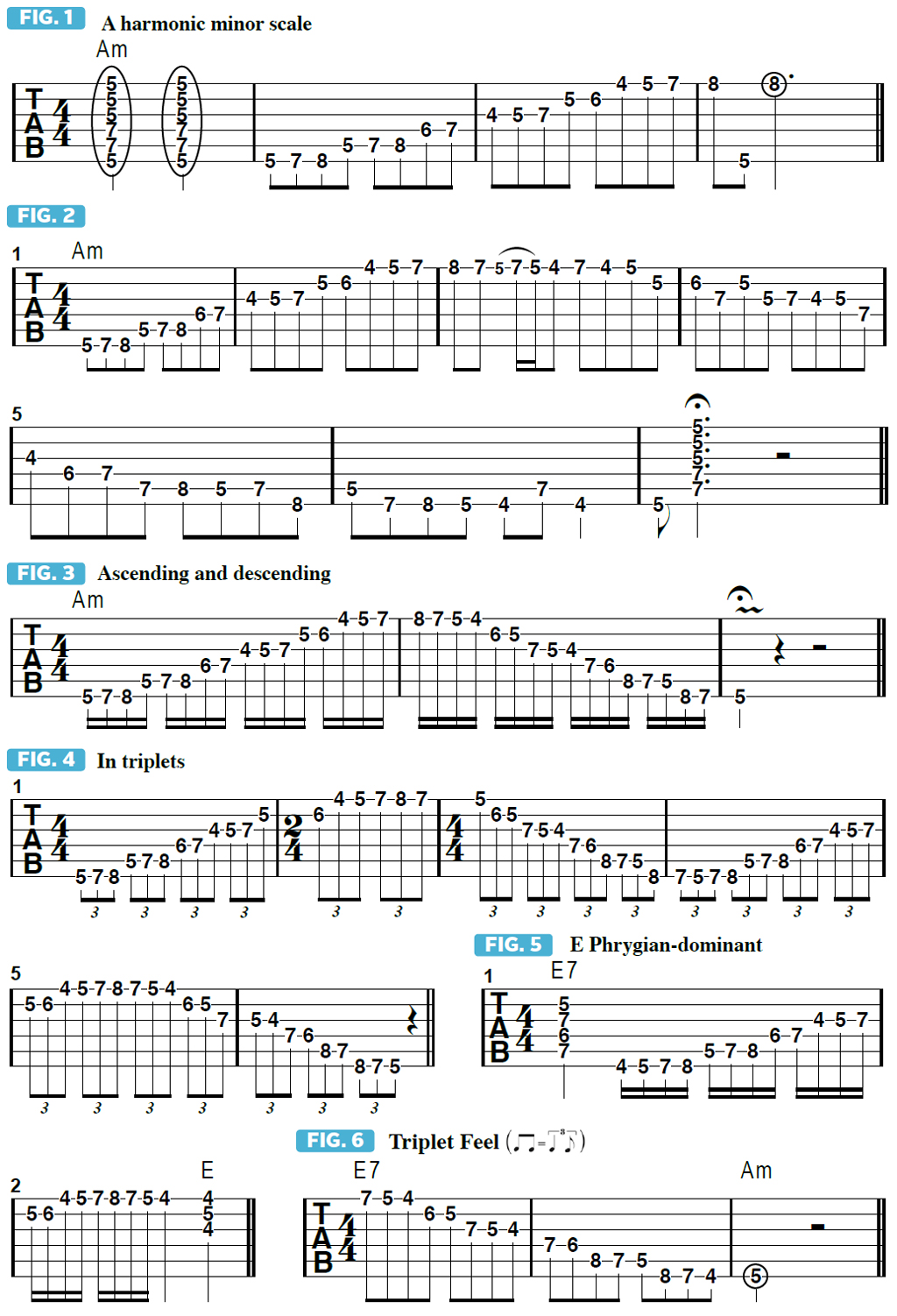Harmonic minor scale: enhance your leads by fully grasping this widely used scale
Gypsy jazz master Stéphane Wrembel shows you how to implement this classic scale in your solos
In this lesson, I’d like to focus on a scale that is widely used in classical music, gypsy jazz and other styles - harmonic minor.
The degrees of the harmonic minor scale are 1(root), 2, b3 (flatted 3rd), 4, 5, b6 (flatted 6th) and 7 (major 7th). In the key of A minor, the notes are A, B, C, D, E, F, G#. Harmonic minor is very similar to the natural minor scale, also known as the pure minor scale and the Aeolian mode, differing by only one note: in the latter, the 7th is flatted (b7), which in the key of A minor would give us G instead of G# (A natural minor scale: A, B, C, D, E, F, G).
The most unusual thing about harmonic minor is there is an interval greater than a whole step between two of the notes, which is very rare in seven-note scales. The space, or gap, between the b6 and the 7 is three half steps, which is the interval of a minor 3rd, although in this case it’s theoretically considered an "augmented 2nd” (F to G#).
When it comes to scale studies, my favorite resource is the book Diatonic Major and Minor Scales written by legendary classical guitarist Andrés Segovia, which includes 24 major and minor scales and that are great for studying and warming up.
The harmonic minor scale is very rich and beautiful and is perfect for both improvisation and composition. The scale works really well over the i (one minor) chord in a minor key, and also over the V (five major) or V7 (five dominant-seven) chord of the same key.
I don’t approach the harmonic minor scale with the standard three-notes-per-string patterns most players use with various seven-note scales. For me, it’s more about how the scale fits with a chord in each position. The idea is to find a connection between the scale pattern and its associated chord form.
FIGURE 1 illustrates a 5th-position Am chord followed by the A harmonic minor scale played in this same position. In FIGURE 2, I add a little bit of improvisation to demonstrate how I might embellish the scale pattern to make it sound like a melody.
All the latest guitar news, interviews, lessons, reviews, deals and more, direct to your inbox!
As we have done in the past, play through the scale pattern in quarter notes, eighth notes, 16th notes, etc, always tapping your foot on each beat to keep steady time. FIGURE 3 illustrates the scale played in steady 16th notes. In FIGURE 4, it’s played in eighth-note triplets.
As mentioned, the scale sits beautifully over the V (five) chord, E7, as demonstrated in FIGURES 5 and 6 When one plays this set of notes in reference to an E tonal center, the resultant scale is called the E Phrygian-dominant mode (E, F, G#, A, B, C, D).

